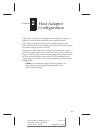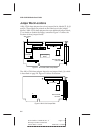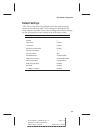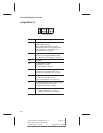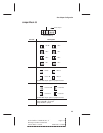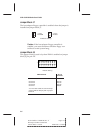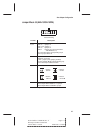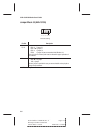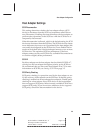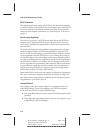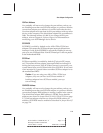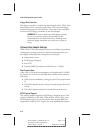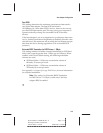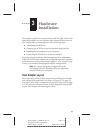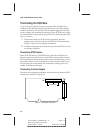
2-9
Host Adapter Configuration
AHA-1510A/20A Series User’s Guide
Stock Number: 510400-00, Rev. C Page: 2-9
Print Spec Number: 491842-00
Current Date: 11/18/94 ECN Date: 11/29/94
Host Adapter Settings
SCSI Disconnection
This setting determines whether the host adapter allows a SCSI
device to disconnect from the SCSI bus (sometimes called Discon-
nect/Reconnect). Enabling disconnection allows the host adapter to
perform other operations on the SCSI bus while the SCSI device is
temporarily disconnected.
When disconnection is allowed, which is the default setting, the SCSI
device may disconnect from the SCSI bus. The SCSI device may choose
not to disconnect, however, even if permitted by the host adapter (this
can usually be configured on the SCSI device). Leave Enable Discon-
nection at its default value if the host adapter connects to two or more
SCSI devices. This optimizes SCSI bus performance. If the host
adapter connects to only one SCSI device, set Enable Disconnection to
no to achieve slightly better performance.
SCSI ID
Each host adapter on the host adapter has the default SCSI ID of 7,
which gives the host adapter the highest priority on the SCSI bus.
We recommend that you leave each host adapter ID at 7. For more
information on SCSI IDs, see Setting SCSI IDs on page 3-5.
SCSI Parity Checking
SCSI parity checking is a procedure used by the host adapter to ver-
ify the accuracy of data transfer on the SCSI bus. By default, parity
checking is enabled on all host adapter host adapters. Disable parity
checking for a host adapter if any SCSI device on the host adapter
does not support SCSI parity. Most currently available SCSI devices
support SCSI parity. If you are not sure whether a device supports
SCSI parity, consult the documentation for the device.



